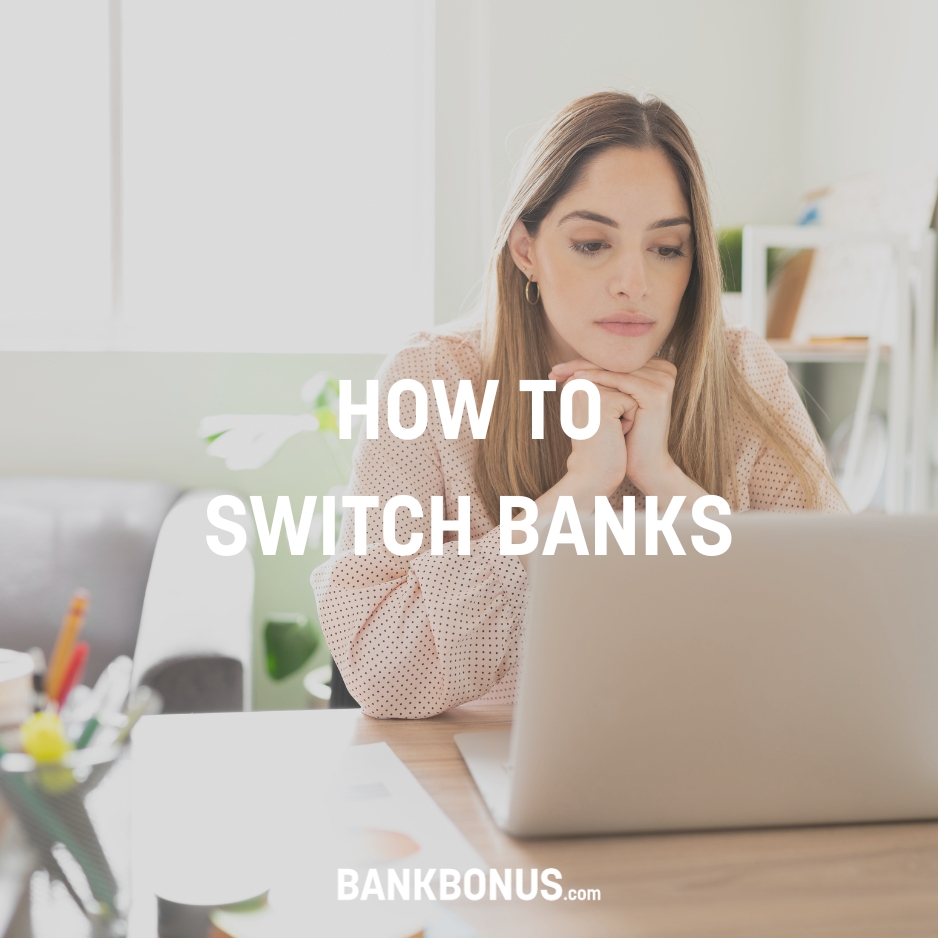Whether you want to apply for your first credit card or are shopping for a new one, it’s important to know your options. There are many different types of credit cards out there, so it might feel like a chore trying to pick the perfect one.
To help you choose the right credit card, we narrowed it down to the main categories that cards fall under. I’ll also give you some examples of the best credit cards within each category.
9 Types of Credit Cards
Here are the nine main types of credit cards you should consider having:
- Rewards Credit Cards
- Cash Back Credit Cards
- 0% Interest Credit Cards
- Travel Credit Cards
- Balance Transfer Credit Cards
- Secured Credit Cards
- Business Credit Cards
- Student Credit Cards
- Store Credit Cards
1. Rewards Credit Cards
A rewards credit card earns points, which you can redeem for different rewards like cash, gift cards, shopping deals, and more. These types of credit cards come with rewards programs, and each one is a little different. How you use your points is up to you, and you should choose a card with some enticing options.
To earn points with a rewards credit card, all you have to do is use your card. Each rewards card issues a certain number of points per dollar spent. The value of these points varies, and you’ll notice that each credit card company has a different conversion rate. You also might see bonus categories for everyday purchases like gas, groceries, or eating out. When you spend within a bonus category, you’ll earn a multiplied amount of points per dollar spent.
Plus, most rewards credit cards come with a sign-up bonus. Usually, you need to spend a certain amount within your first few months after opening to qualify.
Best Rewards Credit Card:
🏆 American Express Gold Card
Why we like it:
- 60,000-point welcome bonus
- 4x points at restaurants and supermarkets
- 3x points on flights (in the Amex app)
- $120 in Uber Cash
- $120 dining credit
- $250 annual fee
2. Cash Back Credit Cards
Cash back cards offer a single perk: cold hard cash. The amount of cash back you get is usually expressed as a percentage. For example, you might earn 3% cash back for every dollar you spend. But, of course, this totally depends on the card and its terms.
With a cash back card, you’ll either build up a cash back balance, which you can use when you want, or you’ll see the reward applied to your balance as a statement credit. Also, just like a rewards card, you might get more cashback when you spend in certain categories. Other cards may opt for a flat rate that applies to any transaction — it all depends on the card.
As you look for the best cash back card, think about how you usually spend. For example, if most of your budget goes to gas stations and grocery stores, find a card that’ll pay you well for it.
Best Cash Back Credit Card:
🏆 Discover It Cash Back
Why we like it:
- 5% cash back at Amazon, gas stations, restaurants, and grocery stores
- 1% cash back on everything else
- 2x Cashback Match at the end of your first year
- No annual fee
3. 0% Interest Credit Cards
Zero-interest credit cards offer a 0% intro APR (annual percentage rate). That means you can use your card for a set period of time, usually around 12-21 months, without accumulating any interest when you carry a balance from month to month.
As long as you pay off your balance before the intro offer ends, you won’t owe any interest on it. These cards are ideal if you need to make a big purchase and pay it off over time without racking up interest.
Some credit cards offer a 0% interest APR on balance transfers, too. While zero-interest APR offers expire, you can also find credit cards with ongoing low-interest rates.
Best 0% Interest Credit Card:
🏆 Citi® Diamond Preferred® Card
Why we like it:
- 0% APR for 21 months on balance transfers
- 0% APR for 12 months on purchases
- No annual fee
- Free FICO score access
- Purchase protection
4. Travel Credit Cards
Travel rewards cards are designed for people on the move. These types of credit cards earn extra points for travel-related expenses, and their rewards are typically travel-focused. For example, you can use your travel points (or credit card miles) on free hotel stays, flight upgrades, or car rentals.
A good travel card is a must-have if you’re a frequent traveler. Many of them come with additional perks, like free TSA Precheck or Global Entry, and some even get you into exclusive airport lounges. If you tend to fly with a single specific airline, you can also opt for a card that works within the airline’s loyalty program. For example, Barclay’s JetBlue Plus card offers priority boarding and a bunch of other perks for JetBlue flyers.
Best Travel Credit Card:
🏆 Capital One Venture Rewards
Why we like it:
- 60,000-mile sign-up bonus
- 5x miles on hotels and rental cars
- 2x miles on everything else
- $100 credit toward TSA Precheck or Global Entry
- 2 Capital One lounge visits per year
- $95 annual fee
5. Balance Transfer Credit Cards
Balance transfer credit cards offer the chance to move a balance from an existing card and avoid a high-interest rate. This allows you to pay down your debt without getting hammered with fees. Even if you only make the minimum payment, you won’t see your balance increase.
Most balance transfer cards come with an introductory period and an introductory rate (usually 0%). For that amount of time (often the first year or two), you won’t pay interest on the transferred balance. Just keep in mind that you’ll probably pay a balance transfer fee, which usually isn’t too high. Also, don’t forget when that intro APR ends — you want to clear your balance ahead of it to avoid losing money.
In general, you shouldn’t focus on rewards with a balance transfer card. These types of credit cards are designed to help you shave off your credit card debt, so there’s usually not much in terms of perks.
Best Balance Transfer Credit Card:
🏆 Citi Simplicity
Why we like it:
- 0% balance transfer APR for 21 months
- No annual fee
- No late fees
6. Secured Credit Cards
A secured credit card is a great way to ease into building (or rebuilding) your credit score. Unlike an unsecured credit card, which allows you to spend within your allocated credit limit, a secured card is tied to a bank account balance.
When you open a secured credit card, you make a deposit into an account linked to the card. This is your security deposit. How much you deposit determines your credit limit for the card.
In this way, a secured credit card functions like a prepaid debit card — you can only spend the amount you put in. But, the advantage of the secured card is that you can still earn rewards and build your credit score when you use it. If you want a credit card without the risk of incurring a bunch of debt, this is a great option. Of course, secured cards will never match the earning potential of a rewards card, but they can help keep you in the green.
Best Secured Credit Card:
🏆 Capital One Platinum Secured Card
Why we like it:
- No annual fee
- No hard credit check
- $49, $99, or $200 minimum (refundable) deposit
- Flexible due dates
7. Business Credit Cards
A good business credit card is essential if you’re a small business owner. Business cards help you separate business expenses from personal ones, which comes in handy during tax season.
Business credit cards tend to come with a bunch of benefits specifically geared toward business owners. For example, you might earn some bonus points or cashback when you furnish your office or set up Wi-Fi services.
Overall, you want a business card that will help you run day-to-day operations. The best business cards are flexible and low-cost but come with plenty of benefits to make it worth your while.
Best Business Credit Card:
🏆 Chase Ink Business Cash
Why we like it:
- $750 welcome bonus
- 5% cash back on office supplies, internet, and phone expenses
- 2% cash back at restaurants and gas stations
- Free employee cards
- No annual fee
8. Student Credit Cards
If you’re a college student (or the parent of one), it’s time to start thinking about getting a credit card. Building your score while you’re young can set you up for the future, and it’s important to learn credit basics early.
Student card options are typically low-interest credit cards and rarely come with an annual fee. You might even get some leniency on late fees. These are all helpful for someone who is new to having a credit card. Plus, most student cards do not require a good credit score since many applicants won’t have one yet.
In general, student cards aren’t the highest-earning, but that’s okay — once you graduate and land that big job, you can rack up some points.
Best Student Credit Card:
🏆 Discover It Student Cash Back Card
Why we like it:
- No credit score needed
- 5% cash back at Amazon, gas stations, restaurants, and grocery stores
- 2x Cashback Match after your first year
- No annual fee
9. Store Credit Cards
If there’s one store that tends to drain most of your paycheck, you might want to look into a credit card built specifically for it. Whether your shop of choice is Target, Amazon, or Walmart, you can find a card that pays you back for all those purchases.
There are credit cards for most major department stores, so you can probably find one no matter where you shop. While these types of credit cards don’t offer a ton of flexibility, they can be great if you’re fiercely brand loyal.
Best Store Credit Card:
🏆 Amazon Prime Rewards Visa Signature Card
Why we like it:
- $100 Amazon gift card welcome bonus
- 5% cash back at Amazon and Whole Foods
- 2% cash back at restaurants, gas stations, and grocery stores
- 10% cash back on select Amazon Prime products
- No annual fee
How Do Credit Cards Work?
Before you become a credit cardholder, it’s also important to fully understand how credit cards work. At their best, credit cards are incredibly useful financial tools. But, if used irresponsibly, they can also lead you right into a pile of debt and years of financial stress.
Fortunately, the latter outcome is easily avoidable. It’s as simple as knowing what you’re getting into and sticking to a plan.
In practice, a credit card works in the same way as a debit card. You swipe at the store or enter your card number online, and the purchase is charged to your card. However, while a debit card draws the money right from your checking account, a credit card adds it to your balance. Then, you pay off everything you spent at the end of the month and start over.
You need to fill out a credit card application to get a card. When you apply, the issuer checks your credit report, and you’re either approved or denied for the card. If you have excellent credit, you have a wide range of options. If you have bad credit, your options will be limited.
With that in mind, here are the three main factors to consider with any credit card:
Interest Rate (APR)
Every credit card comes with an interest rate, expressed as an Annual Percentage Rate (APR). This percentage reflects the amount you pay in interest if you do not pay your balance in full on time. It’s how credit card issuers make money.
Your APR and your credit score are the main reasons you need to avoid credit card debt. Interest can add up in a hurry, and you’ll completely erase the value of any rewards you may have earned.
So, ideally, you want a low-APR credit card. However, if you’re diligent and pay your balance in full each month, you never need to worry about paying an APR.
Credit Limit
Your credit limit is the line of credit that a credit card company gives you. Limits can range from a couple of hundred dollars to tens of thousands and are determined by your credit history and FICO score.
Your credit limit is the amount you can spend (without a payment) before you max your card out. Once you hit your limit, your card will decline if you try to use it.
Credit limits are fluid, and your issuer can choose to raise or lower your limit at any time. If you pay on time and keep your balance low, you’ll probably get a credit limit increase. If you carry balances and miss payments, you’ll probably see it reduced.
Also, some credit cards come without a limit, but it doesn’t mean you’re free to spend however you want. With a charge card, like the American Express Gold Card, you have no credit limit, but you must pay your balance in full each month. Otherwise, you’ll pay big penalties.
Credit Card Perks
Now for the fun stuff. The main draw of a credit card is the perks you get for using one. Perks vary from card to card, but rewards like cash back, gift cards, or preferred travel rates are common.
To put it plainly, credit card companies offer these perks to get you to spend more. The more you spend (and the more debt you have), the more money these companies make. Again, this is completely avoidable.
The key is to look at any perks as a bonus. You never want to change your spending habits in pursuit of credit card points. Instead, think of them as a nice little add-on bonus for sticking to your budget.
Frequently Asked Questions
What are the different types of credit?
In general, credit bureaus and lenders recognize two types of credit: revolving credit and installment credit.
Credit cards fall under the revolving category. This type of credit does not come with a set end date for repayment, meaning that you can pay off a balance at your own pace.
Installment credit, like a mortgage or student loan, comes with a fixed end date. You make set monthly payments, and you can point to the day when it’ll be paid off.
Which type of credit card is the best?
It depends on your credit history and how you plan to use it. If you have great credit and a steady income, the best credit card is one that’ll earn you the most in rewards. On the other hand, if your credit is in rough shape, your best bet is one that can help you mend it.
To put it simply: the best credit card for you is the one you can use responsibly, no matter what stage you’re at in your financial journey.
Are credit cards good or bad?
This one isn’t exactly black and white. If used correctly, credit cards can be great. If not, they can be one of the most damaging personal finance tools around.
This is where it’s important to understand the American credit system. In order to build credit, you need to have and use it responsibly. This is important if you plan to buy a house or take out a loan.
Unfortunately, this gets a lot of people into trouble. When you make purchases on credit, you agree to pay that money back later — and it can be really easy not to, especially if you’re young or inexperienced. You are charged interest on the remaining balance when you don’t pay your balance in full. Plus, the less available credit you have, the worse it looks for your credit history.
So, it all depends on how you use your credit card. But, if you stick to the basic principles, you should be just fine.
What is the most common type of credit card?
Unsecured credit cards are the most common type of credit card. While secured cards require you to pay a deposit that serves as your credit limit, unsecured cards don’t require any collateral.
They’re a good fit for most consumers and often come with rewards like travel points and cashback.
Which credit card type is best?
The best type of credit card overall is an unsecured card that offers cashback rewards and doesn’t charge an annual fee. However, the right card for you depends on your unique needs and credit profile.
Which is better Visa or MasterCard?
Visa and MasterCard are both accepted worldwide and have a lot in common. Whether MasterCard or Visa is better for you depends on the specific cards you’re considering.
When it comes to these two issuers, focus more on comparing features, fees, and rates than the card’s logo.
Having the Right Type of Card Has its Advantages
Credit cards offer a ton of advantages, and learning how to effectively use one is a critical step in your financial journey.
To find the right one for you, take a hard look at your spending habits. You also need to understand your cash flow and ensure that you’ll be able to pay off any credit card charge you make.
No matter which type of card you go with, stay focused on your goals. Here’s to finding the credit card that works for you and not the other way around.





Comments are closed.
Comments are closed here.